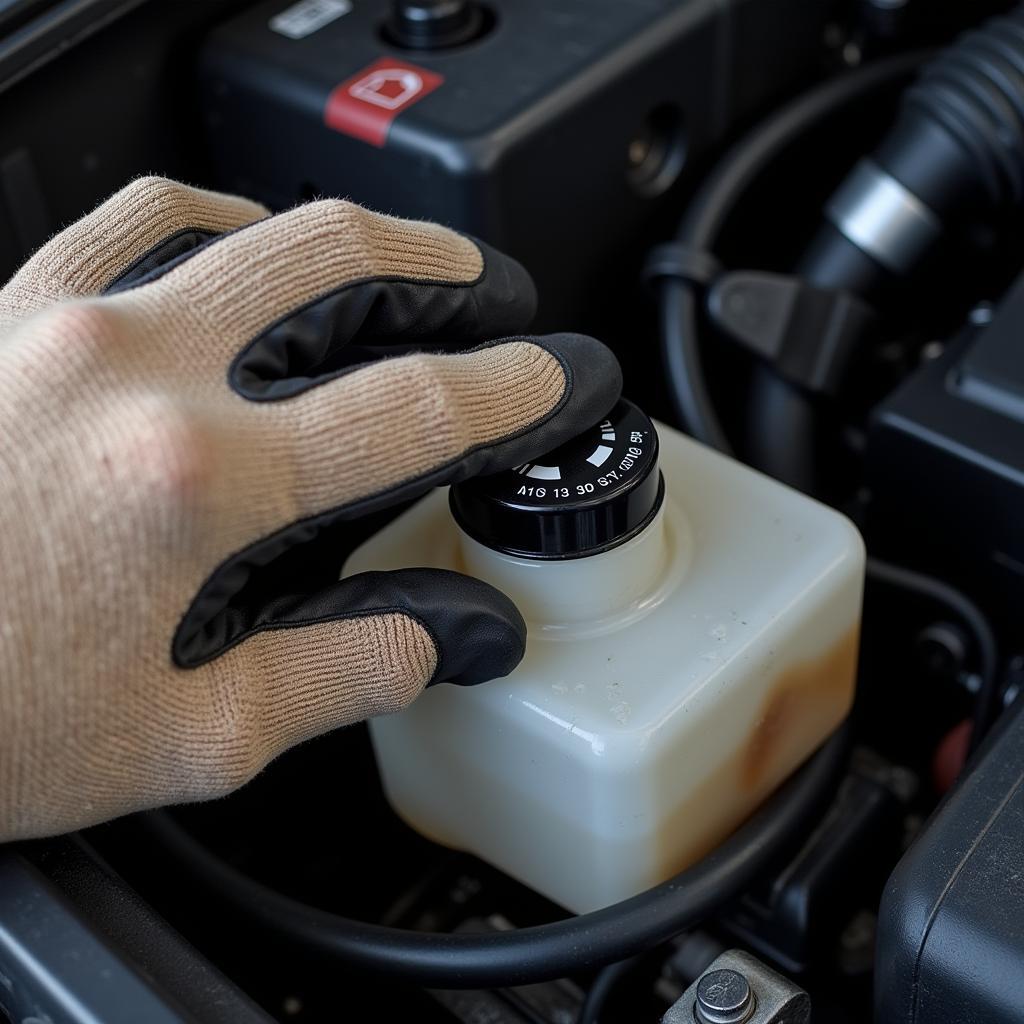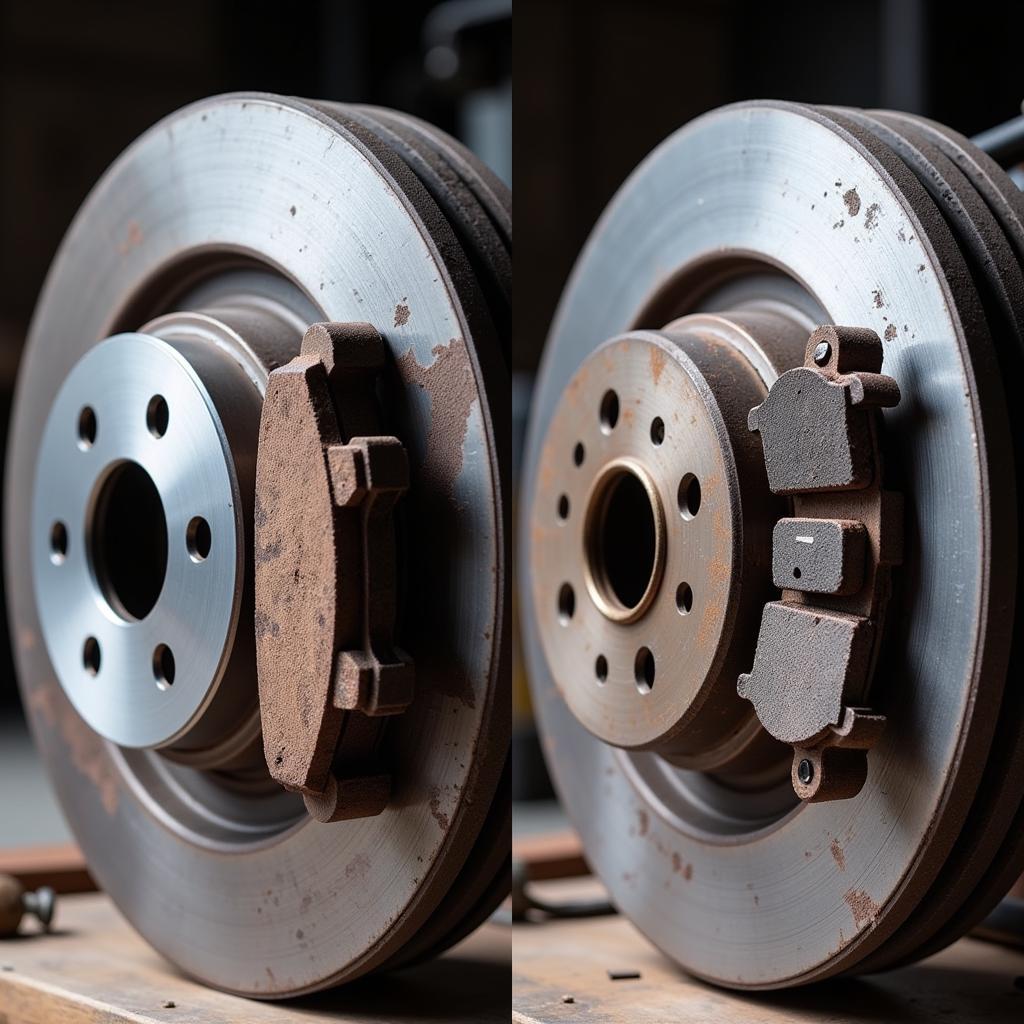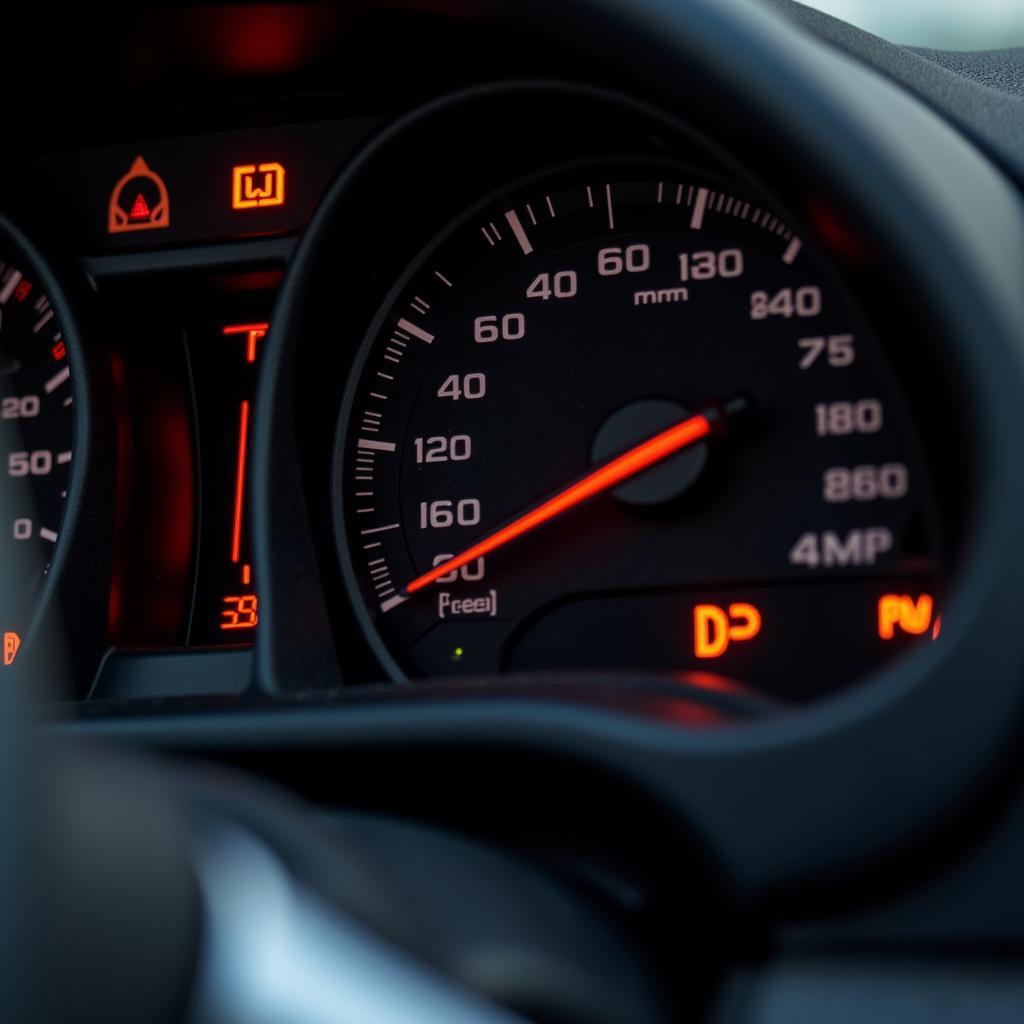The brake warning light on your dashboard is a crucial safety feature, illuminating when your car’s computer detects an issue within the braking system. While it can be alarming to see it lit, understanding the common causes and solutions can help you address the problem effectively. This guide explores the reasons behind a brake warning light, provides step-by-step instructions on how to turn it off, and offers insights on when professional help is needed.
Understanding the Brake Warning Light
The brake warning light, often symbolized by an exclamation mark within a circle or parentheses, serves as a critical indicator of potential brake system issues. While the specific cause can vary, the light itself isn’t a direct indicator of a particular problem. Instead, it’s your car’s way of telling you that something needs attention within the braking system.
Common Causes of a Brake Warning Light
Several factors can trigger the brake warning light. Here are some of the most common culprits:
-
Low Brake Fluid: Brake fluid is the lifeblood of your car’s braking system. As brake pads wear down, the fluid level naturally decreases. If it drops too low, the warning light will activate, signaling the need for a top-up or indicating a leak in the system.
-
Worn Brake Pads: Brake pads are designed to wear down over time. When they become too thin, a sensor within the brake pad assembly triggers the warning light, reminding you it’s time for a replacement.
-
Faulty Brake Light Switch: The brake light switch, located near the brake pedal, is responsible for activating your brake lights when you press the pedal. A malfunctioning switch can disrupt this process, leading to the brake warning light illuminating.
-
ABS Issues: Modern cars are equipped with Anti-lock Braking Systems (ABS) to prevent wheel lockup during hard braking. A problem within the ABS system, such as a faulty sensor, can trigger the warning light.
 Checking Brake Fluid Level
Checking Brake Fluid Level
Troubleshooting the Brake Warning Light
Before heading to a mechanic, here are some steps you can take to troubleshoot the brake warning light:
-
Check Your Brake Fluid: Open the hood and locate the brake fluid reservoir. The reservoir will typically have “brake fluid” marked on the cap. Check the fluid level against the minimum and maximum markings. If it’s low, add the appropriate brake fluid (consult your owner’s manual for the correct type).
-
Inspect Your Brake Pads: Visually examine your brake pads through the spaces between the wheel spokes. If you notice the pads are significantly thin or you see a wear indicator bar touching the rotor, it’s time for a brake pad replacement.
 Worn Brake Pads and Rotor
Worn Brake Pads and Rotor
When to Seek Professional Help
If the brake warning light remains on after checking your brake fluid and pads, or if you notice any of the following, it’s crucial to seek professional assistance immediately:
- Brake Pedal Feels Spongy or Soft: A change in brake pedal feel could indicate air in the brake lines or a leak in the system, requiring immediate attention.
- Unusual Noises When Braking: Grinding, squealing, or scraping sounds when braking often indicate worn brake components that require professional inspection and repair.
- Vehicle Pulling to One Side When Braking: If your car veers to one side when applying the brakes, it could indicate uneven brake pad wear or a more serious brake system malfunction.
Utilizing Remote Diagnostics and Software Solutions
In today’s technologically advanced automotive landscape, remote diagnostics and software solutions are playing an increasingly important role in identifying and addressing brake warning light issues.
2010 audi a4 brake warning light
By connecting your vehicle to a specialized diagnostic tool, trained technicians can remotely access your car’s computer system, read fault codes, and pinpoint the root cause of the warning light.
Turning Off the Brake Warning Light: The Role of Professionals
Once the underlying issue triggering the brake warning light has been identified and repaired, the next step is turning off the warning light itself. In many modern cars, simply fixing the problem won’t automatically extinguish the light. This is where professional automotive technicians, equipped with the latest diagnostic tools, come in.
Using these tools, technicians can:
- Reset the Warning Light: After confirming the repair, they can reset the brake warning light on your dashboard.
- Recalibrate Systems: For issues related to the ABS or electronic parking brake, recalibration might be necessary to ensure proper functioning and turn off the warning light.
- Perform Software Updates: In some cases, a software update to your car’s braking system might be required to address bugs or glitches that could be causing the warning light to illuminate.
Conclusion
The brake warning light is a crucial safety feature in your vehicle, and ignoring it could have serious consequences. By understanding its common causes, taking appropriate troubleshooting steps, and seeking professional help when needed, you can ensure your braking system remains in optimal condition, keeping you safe on the road.
FAQs
Can I drive with the brake warning light on?
It’s highly discouraged to drive with the brake warning light on. It indicates a potential problem with your braking system that could compromise your safety.
Is it expensive to fix a brake warning light issue?
The cost of repair depends on the underlying cause. Simple fixes like adding brake fluid or replacing brake pads are relatively inexpensive. However, more complex issues like ABS module replacement can be costly.
How often should I check my brake fluid?
It’s a good practice to check your brake fluid level at least once a month or every time you check your engine oil.
Do I need to replace all four brake pads at the same time?
While replacing all four brake pads simultaneously is ideal for even braking performance, it’s not always necessary. If only one or two pads are worn, you can replace them individually.
2003 audi a4 brake fluid yellow warning light
Can a bad battery cause the brake warning light to come on?
While rare, a weak battery can sometimes cause electrical glitches that might trigger the brake warning light. However, other symptoms, like dimming lights and slow engine cranking, usually accompany a failing battery.
audi brake fluid warning light
How do I know if my brake light switch is faulty?
A common sign of a bad brake light switch is when your brake lights stay on even when you’re not pressing the brake pedal, or they don’t illuminate at all when you apply the brakes.

